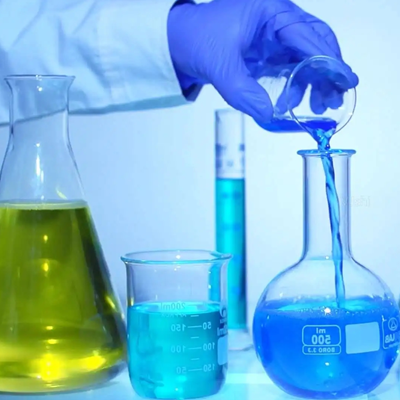The role and application of potassium phosphite in non-pesticide control
Potassium phosphite is the main raw material of a new type of non-pesticide control which is being vigorously promoted in developed countries. While having the dual characteristics of medicine and fertilizer, potassium phosphite is not only absorbed quickly, but also highly efficient and very friendly to the environment. Here we briefly discuss the role and use of potassium phosphite in biological control.
Ⅰ, the use of potassium phosphite
1. After diluting the product with water, apply foliar spraying or soil irrigation.
2, the leaf spray should be selected in the early morning or dusk, to avoid the scorching sun or high temperature.
3. Do not mix with alkaline pesticides to avoid reducing fertilizer efficiency or damaging crops
Usage: The dilution concentration needs to be used after appropriate adjustment according to the crop type, growth period and soil condition, and its application and dilution times are as follows:
Foliar spraying: 1000~2000 times
Soil irrigation: 500 ~1000 times
Ⅱ,the role of potassium phosphite in non-pesticide control
Potassium phosphite has been applied to crop disease prevention. After the successful development of a disease control agent "Forsyd" in the 1980s, it was found that the main disease-inhibiting substance was phosphite in its metabolite, which can stimulate the host plant to start the defense system and produce antimicrobial substances. After application, it can be absorbed by plant leaves and roots, transported to the body, play a direct bactericidal function, and start the defense system, so that the plant has disease resistance to invading pathogens. When the pathogen invades, the pathogen can be applied and controlled by the disease prevention mechanism of non-pesticide control materials - phosphite and phosphite. At this time, the pathogen is also recognized by plant cells, and the phosphite activates the defense system to produce plant antibiotics and PR proteins, which directly attack the pathogen, and sends an alarm to call on other cells that have not been invaded to activate the defense system. This in turn causes polysaccharides to add additional proteins to strengthen the cell wall, so that the pathogen is suppressed or killed by the plant's response. The disease Resistance of phosphite and phosphite is a kind of acquired Systemic disease resistance (systemic AcquiredResistance, referred to as SAR), also known as InducingSystemic Resistance (ISR). It is a kind of generalized biological control.
Potassium phosphite can be directly diluted applied to crop pages; The disease prevention mechanism of phosphite, after the application of potassium phosphite in crops, it is absorbed by the leaves and roots, transported to the plant, and when the disease virus invades, it stimulates the plant to produce plant defensin. The experiment showed that potassium phosphite had good downward movement in plant, but poor upward movement, and had no control effect on the reserve period, so it was better to control leaf or fruit disease. For example, potassium phosphite can be metabolized into phosphoric acid by soil microorganisms in the root and become one of the main fertilizers of the plant, but the experiment shows that phosphite can not directly replace phosphoric acid as a fertilizer, but it can be applied together with phosphoric acid to promote plant growth. In addition, the amount of phosphorous acid used for disease prevention is small, which will not cause pollution to the environment. The application of phosphorous acid to control disease can reduce the use of pesticides, maintain ecological balance and ensure the sustainable development of agriculture.
According to the research and test of potassium phosphite in plant disease prevention and control by domestic agricultural administration in recent years, the application of potassium phosphite in disease prevention and control abroad has been affirmed in the control of ooomycetes caused by dew disease, dew blight and rot disease. The effects of potassium phosphite on flower gerbera, lily, orchid, orchid, tiger head orchid, orchid and fruit tree kumquat, citrus, papaya, avocado seedlings, presbyopia disease, grape dew disease, lychee fruit disease were found by many researchers. Fruit and vegetable capsicum, sweet pepper, tomato and potato late blight, lettuce and cruciferous dew disease and golden line seedling rot are quite effective.
At present, there are not many manufacturers producing potassium phosphite in China. Our company has been welcomed by many large enterprises overseas through the introduction of overseas advanced technology and technology and the development of high purity and low impurity potassium phosphite based on the experience of domestic first-class phosphorus chemical experts. For customers with stable usage, we will give priority support in price and after-sales service.
 Aluminum Diethylphosphonate(AD
Aluminum Diethylphosphonate(AD
 The Role and Application of Po
The Role and Application of Po
 How to Identify the Quality of
How to Identify the Quality of
 The Reduction Mechanism of Sod
The Reduction Mechanism of Sod


